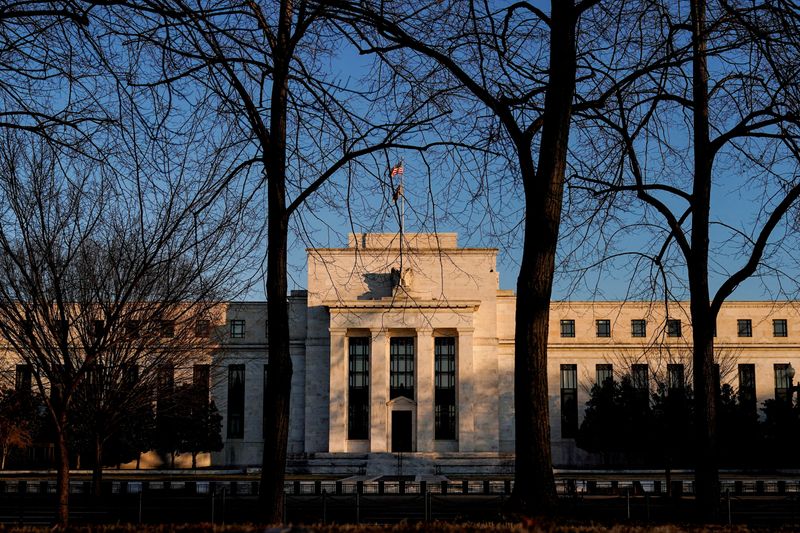By Michael S. Derby
NEW YORK (Reuters) - The traditional turbulence of money markets at year's end could pose a first test for a new and so far largely unused central bank liquidity facility, but a shift to full scale activity likely still lies some time off into next year.
Some market participants reckon that the Fed’s Standing Repo Facility, which it formally adopted in 2021, may see some noticeable usage over the turn of the year as traders and investors manage their money during a predictably volatile period. If that happens, it would not be a sign of distress, but of the financial plumbing system working as intended.
The Standing Repo Facility, or SRF, takes in Treasury securities from eligible financial firms - they are mainly the mega banks that normally support the government securities market and serve as counterparties to Fed interventions - and converts them quickly into cash.
Scarred by Treasury bond owners’ severe liquidity problems in the spring of 2020, the facility is designed to be a sort of automatic stabilizer for markets. The facility is also designed to lift from the Fed at least some of the burden of discretionary liquidity operations, of the sort it was forced to resort to in the fall of 2019 when market liquidity ran short.
So far, markets, still awash in Fed-created money, haven’t needed to tap the SRF in a meaingful fashion. But what appears to be some recent small-scale testing has reminded markets that if not soon, the day is coming where the SRF will be in the mix.
The end of 2023 “could mark the christening of the SRF,” said Scott Skyrm of money market trading firm Curvature Securities. He noted that a key borrowing level for short term markets called the general collateral repo rate has been trading above the 5.5% SRF rate which creates “a small incentive” for eligible firms to go to the Fed as the year draws to a close.
THE MAIN EVENT
But any SRF usage now would likely be quite small. The bigger test lies down the road as the Fed presses forward with its ongoing effort to shrink the size of its balance sheet. That effort is drawing liquidity from the financial system and Fed officials expect the process, which is allowing just shy of $100 billion per month in Fed-owned bonds to mature and not be replaced, to run for quite some time.
“I don't know at what point, you know, how things will transpire over the next year,” Federal Reserve Bank of New York President John Williams said in a television interview on Dec. 15. The draw down is “going according to plan” and reserves are still quite abundant, he said, suggesting no imminent need for the Fed to slow or stop the contraction of its balance sheet.
Markets, however, are less confident in that outlook, and they’ve been eyeing somewhere around a second to third quarter stopping point. Some of that projection rests on the idea that another Fed liquidity tool, the reverse repo facility, has been falling very rapidly over recent months. After hitting a record $2.6 trillion at the end of last year, it’s fallen markedly and stood at about $794 billion on Tuesday.
It’s unclear if the reverse repo facility, which takes in cash largely from money market funds and is designed to provide a floor for short-term rates, will return to negligible usage or whether some cash will remain.
A report from the New York Fed on Dec. 19 said conditions in the banking sector argue for continued contraction. It noted if reverse repos continue to fall, “such a steady decline would be consistent with that observed in early 2018, when investment at the [reverse repo facility] gradually disappeared as the Federal Reserve continued to normalize the size of its balance sheet and reserves in the banking system became less abundant.”

Joseph Wang, chief investment officer at Monetary Macro, believes the fate of the reverse repo facility is the key barometer of when the SRF will spring into life.
“I wouldn’t expect meaningful usage until the [reverse repo facility] is at 0” and the Secure Overnight Financial Rate matches the rate offered on the SRF. Reverse repo utilization “should be around 0 first half of next year, and thereafter rates could drift higher towards the (SRF) offering rate. So I don’t expect meaningful usage for some time.”